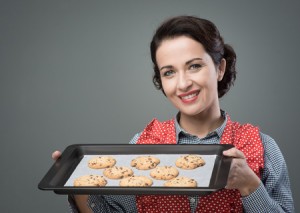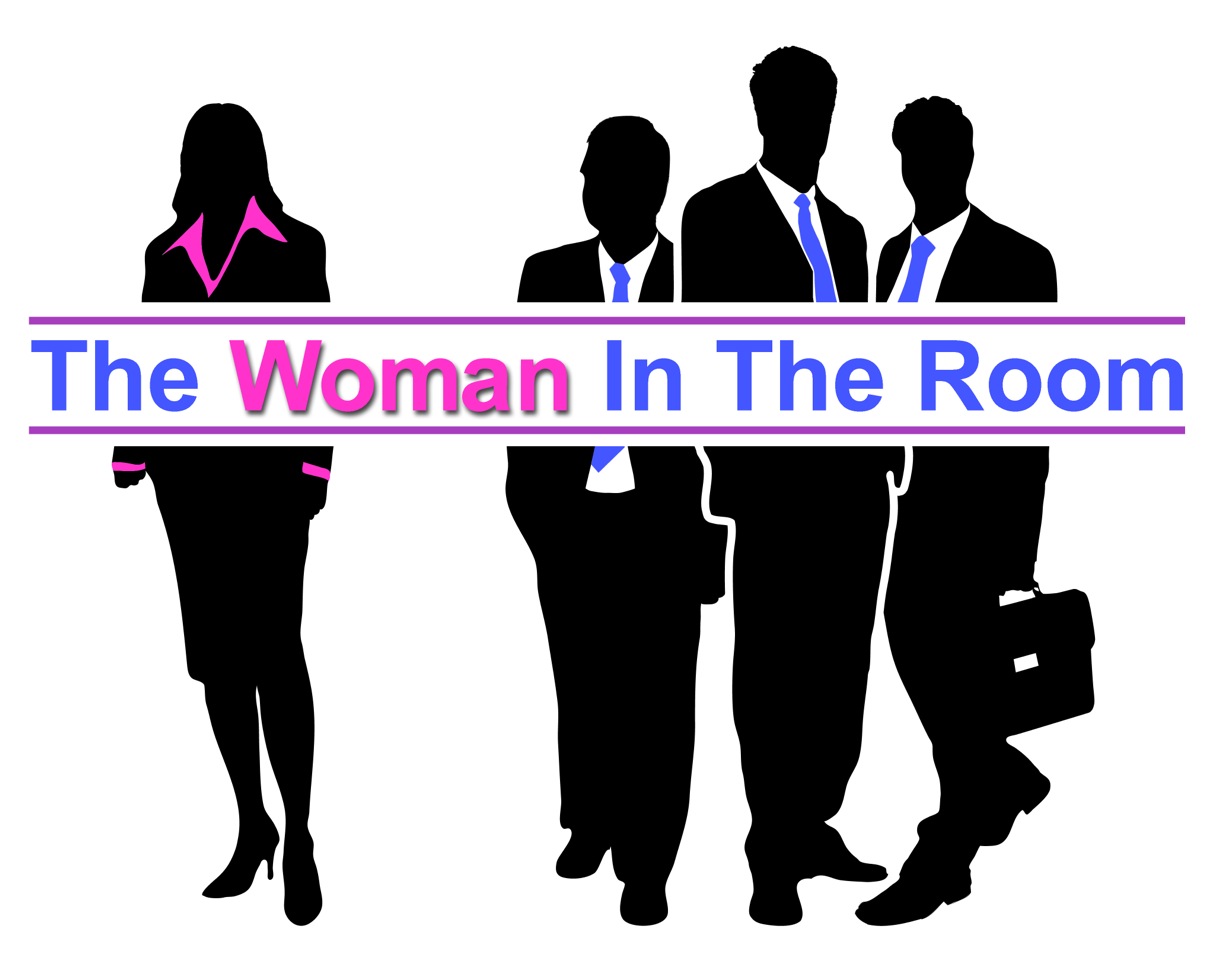I often see it cited that one reason women aren’t advancing in the male-dominated workplace is because women don’t have enough female role models. I always question how much of a factor this really is because I never had an older woman in my profession to be my role model. I don’t know if a professional role model would have made any difference or would have made anything easier.

http://www.123rf.com/photo_42256454
Whenever we discuss the value of role models we have to first think about what it is we expect from our role models. From the media it seems role models are little more than cheerleaders who motivate and validate that “Yes, someone like me can make it in this career field!” I always thought the idea that I needed to resemble someone else in the workplace in order to know my value was an absurd notion because I saw my uniqueness as an advantage.
To me role models should do more than validate that it is okay for us to be in a role. To me they should challenge our perceptions. They should open us up to new perspectives and help us grow personally and professionally. Given that,our role models can come from a variety of places including some very unexpected places.
Back in 1982 when I began my career as an Air Force 2nd Lt, the highest ranking female officers on my base were 1st Lt.’s. There were no female senior officer role models because most women left military service once they became pregnant. This was so prevalent that the Air Force didn’t even have a maternity uniform for the few women that stayed in. Female service members were simply expected to get out and become “Dependents” – the official name for spouses and children of military servicemen.
I was also an engineer and there weren’t any female engineer role models to be found either. In my town there were 2 other female engineers but both of them also graduated in 1982. One of my fellow female engineers was an Air Force officer too who joined my squadron and the other worked for the Corps of Engineers. We were told that there were a couple of other female engineers in a town 200 miles away. When we looked them up we discovered one had already left engineering and the other was only about 3 or 4 years older than us.
Given my situation, I fully understand how it feels to be the odd duck in your workplace. The only person I could completely relate to was the other female engineer in my squadron. She and I became good friends and together we quickly changed a lot of misperceptions about women in the Air Force and women as engineers. We forged our own path and our reward was a lot of self-confidence and a strong sense of self.
So today when I read about women needing role models I question if in return they are missing out on the self-confidence and sense of self we gained. Looking back It isn’t a trade-off I would want to make.
Even though there were no older female officers or engineers, I still managed to find both a female role model and a female mentor in women who came from a much more traditional background. These women were my squadron commander’s secretary and his wife.
My first squadron commander was a strong leader and by far the best squadron commander I had in the Air Force. From him I learned that strong men surround themselves with strong people, including strong women.
His secretary, Marian became my mentor. I will always credit her with teaching me to see the male-dominated workplace from a female perspective. She is the one who pushed me down this path of figuring out how women improve (not merely fit into) the male-dominated workplace. (More on Marian in my next article)
However, it was my commander’s wife Mary who became my role model on how to be a businesswoman. She was a Mary Kay lady.
On the surface a Mary Kay lady who lives in the traditional feminine world of make-up and skin care seems a world apart from a female engineer and Air Force officer. But Mary smashed the traditional image of a non-working military officer’s wife who lives her life to support her husband’s military career.
You see, Mary wasn’t just an average Mary Kay lady.
She was the TOP Mary Kay Lady. As in the #1 Mary Kay lady.
Mary had Mary Kay’s largest and most profitable global network of consultants. She had a global empire before most male CEO’s even knew what globalization was!
Of course she drove the infamous pink Cadillac. But what made everyone take notice was that she earned more money than her husband. A lot more. The rumors around base as to how much she made were staggering. When the average household income was about $24,000 per year, it was rumored that she was a self-made millionaire.
Mary was a role model to many Air Force wives and she helped many other women become wealthy too. We openly joked that the husband of any woman working with Mary better be comfortable with the idea that his wife would be making more money than him. We quietly joked that my squadron commander held counseling sessions for such husbands.
To me, Mary represented the ultimate successful powerful business woman.
She also became my role model for a military officer’s wife.
When I went into the Air Force I wasn’t just an officer, I was married to another officer so I was also an officer’s wife. This was still a fairly rare – there were only 5 female Air Force officers married to other officers on my base. Within my squadron and wing, being a married female officer wasn’t a big deal because Mary already smashed all traditional perceptions about being an officer’s wife. When she talked to me about being an officer’s wife the first thing she said was “I don’t bake cookies.” (Blasphemy!) She also rarely attended wives luncheons and social events. She couldn’t, she has a business empire to run.

http://www.123rf.com/photo_34154137
However within my husband’s squadron and wing, they had a much more traditional view of a wife’s proper role. When they found out that I was an engineer, I got the polite “That’s nice.” But when I showed up to a luncheon in my Air Force uniform, the temperature in the room dropped precipitously. I had to outside into the -25 degree wind chill to warm up.
After such an icy reception I didn’t attend another wives’ event for 12 years. And according to Mary that was fine because I had more important things to do. I had a career to work and my own money to make.
Unfortunately I was only around Mary for one year before her husband got transferred. But her influence always remained.
When I got out of the Air Force and began working in the civilian sector, I copied Mary. I wanted to look like her version of a businesswoman and not what society said I should look like.
Mary was always impeccably dressed, even at the grocery store. She never looked frumpy like some officer’s wives who wore oversized denim jumpers. Mary dressed like a feminine businesswoman. She didn’t follow the Dress for Success prescribed businesswoman attire of a black, gray or navy suit with 2” pumps that was society thrust upon women as the ideal. Mary wore dresses or slacks that showed off her figure. She wore 3” heels. She had colorful accessories. She never looked drab, boring or unisex. She looked like a successful woman.
Following Mary’s example, I indulged in my desire for really nice clothes. After wearing matronly uniforms for 10 years, I wanted to look young and feminine. I bought colorful, stylish and well-tailored business clothes. I wore 3+” heels. My skirts were almost scandalous at 1-2” above my knee. I dressed to make myself feel good. And my copy of Dress for Success was tossed into a bottom drawer and forgotten.
Many years later when I became a Commander’s wife, Mary still served as my role model. By then the Air Force had dropped its unwritten policy that officer’s wives shouldn’t work so they could support their husband’s careers. Too many military families including senior officer’s families were struggling financially and most wives had no choice but to work. All too often they wound up in low paying jobs even though they had a degree.
I was working as a project manager for a company that constructed military family housing. This was something I was very passionate about because as a former engineering officer and military spouse I was acutely aware of the extremely substandard condition of military housing. I knew how important replacing the old housing was to supporting our military families.
One day my husband came home and said his boss asked him about me. His boss “noted” that I seldom attended wives functions on base and I didn’t routinely gather all of the wives in my husband’s squadron in our home for hen parties. My husband simply told him I worked.
I looked at him and said “Did you tell him what I do?”
“No.”
Mary’s statement “I don’t bake cookies” from long ago reverberated in my head and sent me off into rant. “You should have! I don’t go to luncheons because I am too busy. Everyone in your squadron knows what I do! If you asked any of them if they would rather have me build them a new home or bake them cookies, they would say they would rather I build new homes.”
I had my full-Mary on.
Several months later, I got the opportunity to correct my husband’s boss’s perception of me. My company was constructing his new home on base. On the day he was scheduled to tour his new home, I went out the house and waited. When he came into the home, I introduced myself. I explained that this is how I spent my time. He was impressed.
I felt like I followed in Mary’s footsteps. She set a new standard for military wives 20 years ago and now I felt like I was doing the same. I stepped far outside of all of the traditional roles that often box in military wives.
Because I didn’t have women in my profession in my workplaces, I looked around at what other women were doing and Mary Kay ladies were a continuous source of inspiration. While not every woman who took to selling Mary Kay was successful, I knew a few who were in traditional low pay dead-end jobs who found their real success in Mary Kay. They found their self-confidence and their sense of self. And that is what it all boils down to.
The role of the role model isn’t to give us someone to copy or validate us. A real role model is someone who finds their own unique path in life and then has the courage to walk it. They then inspire us to do the same.
Empowered Women Are An Example To Other Women
To subscribe to my articles Contact Me
Don’t forget to leave a Comment and Share

